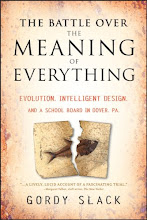Yesterday, for a CITRIS story I’m writing about tele-immersion, I interviewed Oliver Kreylos, an engineer at UC Davis who develops virtual 3D environments out of huge data sets (think MRIs or big geological models) that researchers can “enter into.” Users will soon be able to don a pair of goggles and a Wii controller and walk on into a virtual 3D environment shared by other researchers and a giant 3D model of, say, a patient’s brain, which they can move around and examine from all sides or, if they want to, go into and look for aneurisms.
Kreylos made the great point that 3D movies, unlike his virtual environments (which are made with lots of cameras recording from lots of different perspectives), aren’t really 3D at all. They just give you an illusion of depth by combining two fixed-position images. But then, in the 3D movie theater, when you move your head, the image doesn’t respond appropriately and you feel betrayed; your brain says, “Hey, this is fake!” Whereas, a 2D image presents itself as an image, not a reality. There is no betrayal. Maybe that's why I like 2D movies better. Three-D seems like a fake reality, while 2D is a real representation.
My 12-year-old son Leo made a similar point after watching Avatar in 3D. “We get to see 3D all the time,” he said. “If you pay to go to the movies it should be something different and special...like 2D.”
Friday, September 3, 2010
Subscribe to:
Post Comments (Atom)



1 comment:
Leo is very intuitive. Goes right to the point that everyone else is missing.
Post a Comment